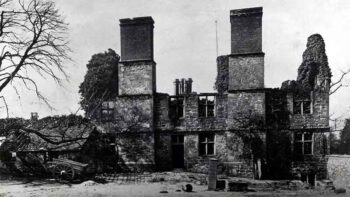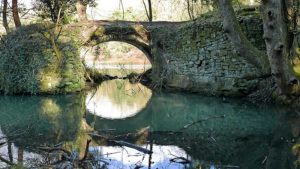To add this calendar to your smartphone, click/tap on ‘Subscribe’ at the bottom of the page.
Performed in Victorian Mourning dress we explore Warwick Castle and Calke Abbey’s “not so living history”.
The secrets that lie beneath and the inhabitants that still occupy the rooms, corridors and grounds of two very different Stately Homes as witnessed by myself, colleagues and guests.

Much of Melbourne’s history can be told by the story of individual houses in the parish and their occupants. This talk by Melbourne History Group Chairman Philip Heath, given on Saturday, 16 November, at 7:30 pm at Melbourne Assembly Rooms Main, selects twelve of the most interesting ones to prove the point.
Admission is £4 (Under 16s free if accompanied by an adult). Refreshments will be available.
The Pigeon – from the gods to the gutter. Dove of peace or rat with wings? A look at our perceptions and complex relationship with this remarkable bird throughout history.
The Derwent Valley: The Story of a Photo Book – Ashley Franklin tells the story of how he assembled the first-ever photo book to celebrate the Derwent Valley Mills World Heritage Site published in November 2023.
Ashley’s talk will take us through the book’s three thematic sections – Industrial Heritage, People and Places and Wildlife – and show how the book encapsulates the valley’s historical significance, its communities, and its rich biodiversity.
Preparing for apocalypse – Britain and the Cold War. – Jed Jaggard.
The Cold War was an ongoing political rivalry between the United States, the Soviet Union and their respective allies that developed after World War II. There was no direct military engagement between the United States and the Soviet Union. However, this period was anything but “cold”.
The Salvation Army – Danny Wells.
Catherine Booth was fortified with the spirit and convictions of early 19th-century rural Methodism of the Midlands. Having met a kindred spirit in William Booth of Nottingham, they were to take their pre-industrial Methodist creed into the religious and political fulcrum of the East End of London in the second half of the century.
The response of the Booths to the poverty, hunger, squalor and ‘sin’ that they observed all around them, was to create the Salvation Army as a ‘Way out of Darkest England’.
It became the fastest-growing religious movement of late Victorian Britain and is still a religious and social service agency of international importance today.
Alan Hiley walks us through a short history of the Ashby to Burton Light Railway.
A journey in photos along the old tramway route to see how it looked then and how it looks now. The tramway opened in 1906 and the journey was from the Town Hall in Burton-upon-Trent and journeyed through Swadlincote to Ashby-de-la-Zouch.
An Historical Society outside visit to The National Arboretum – A talk at 2:00 pm followed by a 50-minute guided land train tour around the site.
After the visit, there is a good café where we can order what we wish to have individually.
The price for the land train is £7.50. Parking is £6 per car on the day and allows occupants to stay all day.

